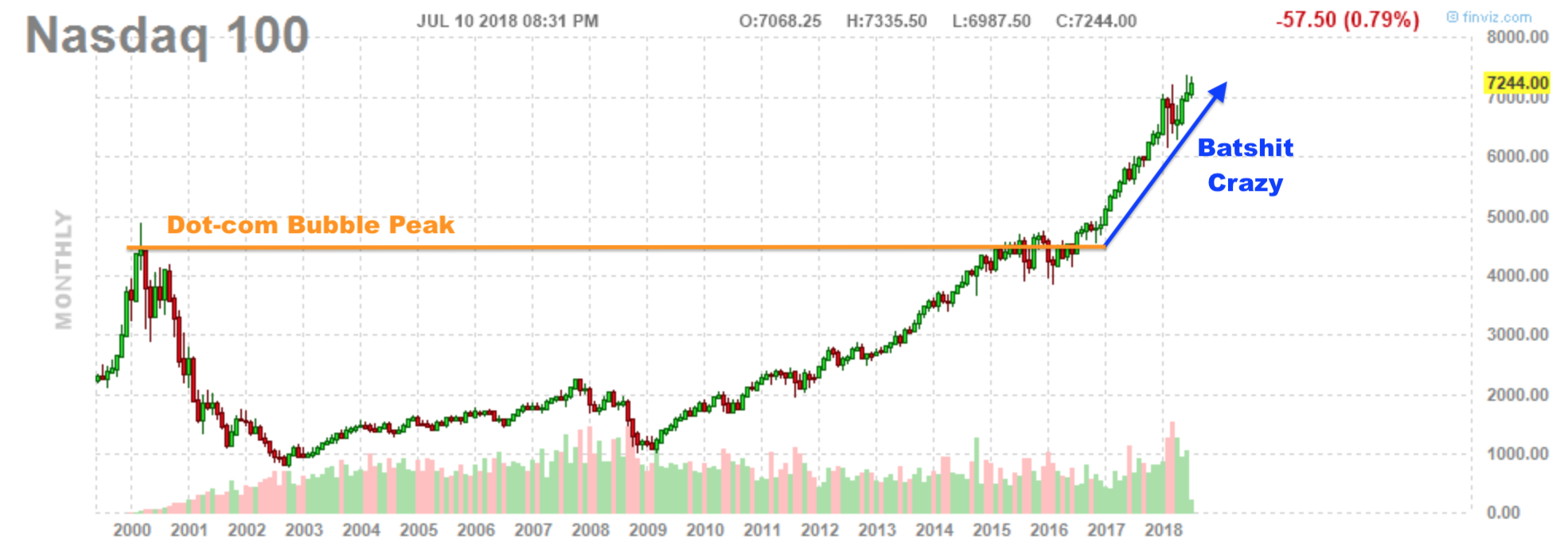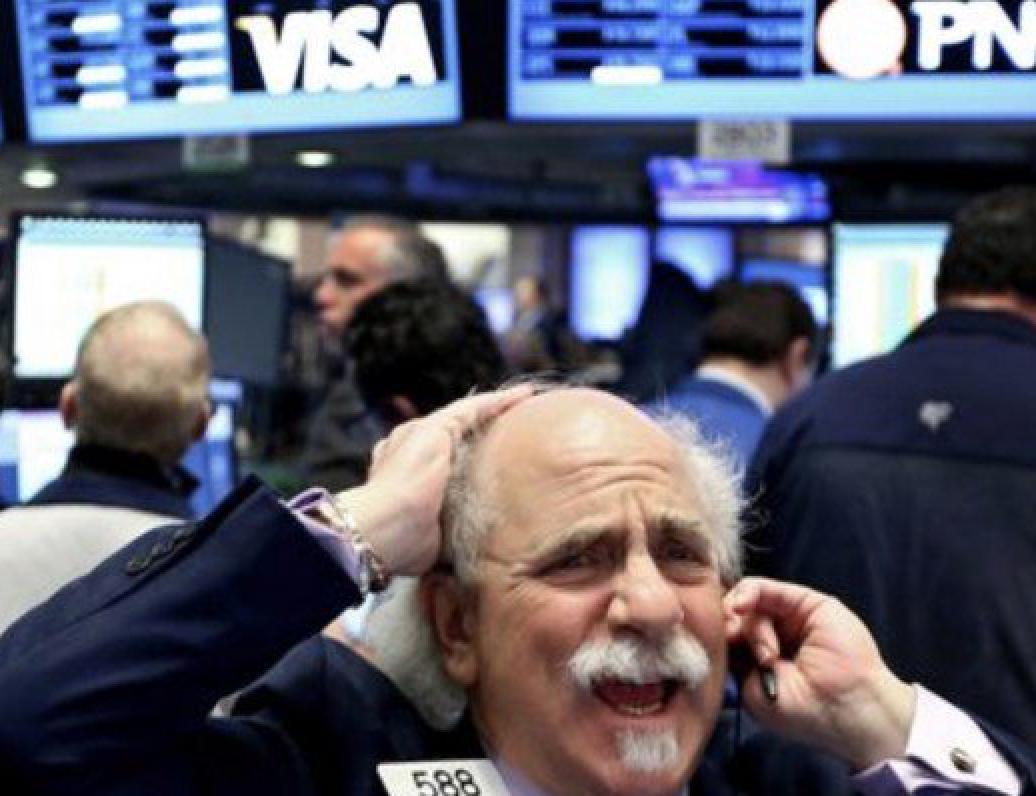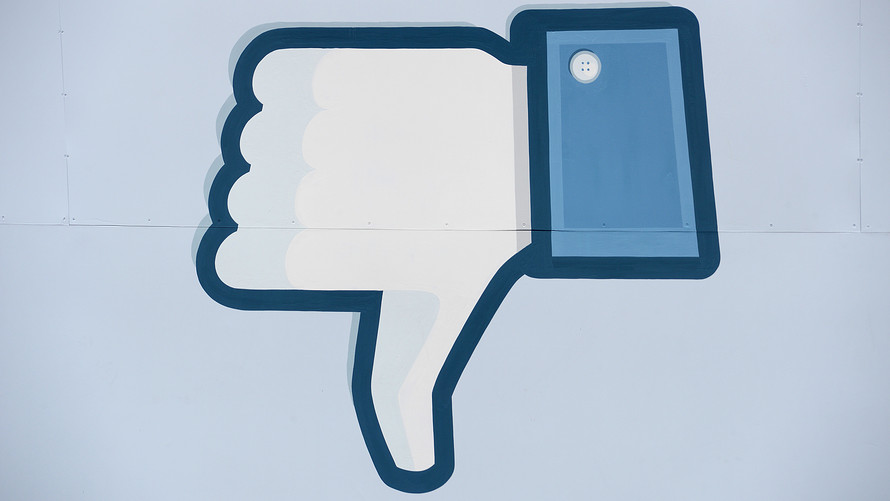Stocks & Equities
 Jeffrey Saut, chief investment strategist at Raymond James, a widely followed strategist and an unwavering market bull, made two very critical observations Tuesday that are likely to reverberate for stocks going forward.
Jeffrey Saut, chief investment strategist at Raymond James, a widely followed strategist and an unwavering market bull, made two very critical observations Tuesday that are likely to reverberate for stocks going forward.
One, the stock market just made a positive move that has not happened since 1958, the same year that NASA was born and President Dwight Eisenhower, a Republican, was in the White House. Two, Democrats are likely to fail in their effort to retake the Senate and may even fall short in the House this fall.
After a fairly rocky month, stocks closed out July with solid gains, extending the S&P 500’s SPX, +0.28% winning streak to four months. Historically, when the market gains in April, May, June and July of midterm election years, the market has finished higher in that year, according to Saut.
“The history of midterm election years is that stocks become dicey in August, but tend to rally as we approach the midterm elections,” said Saut, in a note. “Also worth a mention is that going back decades shows that when the stock market is up in April, May, June and July in midterm election years, in the two years that has happened (1954 and 1958), after an August Angst moment, stocks have finished the year stronger.”
The S&P 500 was up 0.3% in April, 2.2% in May, 0.5% in June and 3.6% in July. The large-cap index jumped 45% in 1954 and rallied 38% in 1958. So far this year, the benchmark has risen 5.3%.
Even without the added boost from politics, stocks almost always gain in years when the market finished higher between April and July, according to Paul Hickey, an analyst at Bespoke Investment Group.
But perhaps the most interesting nugget in Saut’s report is that he doesn’t expect the Democrats to retake the Senate, and even their ability to recapture the House is uncertain.
“Our contacts in D.C. say the House is up for grabs, despite hoots that the Dems will sweep the House,” he said.
Aside from politics, Saut, ever the optimist, stressed that the fact that the broader market didn’t collapse in the wake of Facebook Inc.’s FB, +0.98%meltdown is an indication that funds exiting mega-tech stocks such as Amazon.com Inc. AMZN, +0.89%Netflix Inc. NFLX, +1.54%and Alphabet Inc.’s Google GOOGL, +0.99%GOOG, +0.67% are being rotated into other sectors.
Facebook has slumped 21% after the social media giant last week issued a weak outlook, followed by Twitter Inc. TWTR, +0.60% which also tanked 29% after it released quarterly earnings. The dramatic decline of the two high-profile stocks has raised questions about popular technology and internet-related bets that have helped to buttress the broader market in recent months.
Stocks on Wednesday rose, with the S&P 500 adding 0.2% and the tech-heavy Nasdaq COMP, +0.71% gaining 0.6%. Apple Inc. AAPL, +4.96% on the heels of better-than-expected earnings, rallied more than 4% to lead the Dow Jones Industrial Average DJIA, +0.20% into the green.

The collective three-day move in U.S. “Value / Growth” has been the largest since October 2008–a 4.3 standard deviation event relative to the returns of the past 10 year period–while conversely “1Y Price Momentum” sees its largest three-day drawdown since the Nov ’16 election post-trade.
Enormous underperformance of popular longs relative to shorts speaks to “net-down” behavior at the very least across Equities-funds, although seeing pockets of outright short squeeze speaks to a fair-bit of “de-grossing” as well—ESPECIALLY across the quant market-neutral universe.
The question now becomes whether Value continue to outperform Growth if the tape turns to an outright ‘risk off’ one over the next few weeks of seasonal weakness, prior to commence of heavy (Tech-led) buyback.
.…continue reading this entire article HERE

 Two weeks ago, I issued a report to Peak Prosperity’s premium subscribers, warning of an immiment downwards re-pricing of the FAANG stocks. I even made a rare recommendation for taking an active short position against them (one now up 18%).
Two weeks ago, I issued a report to Peak Prosperity’s premium subscribers, warning of an immiment downwards re-pricing of the FAANG stocks. I even made a rare recommendation for taking an active short position against them (one now up 18%).
That report proved quite timely. Over the past 10 days:
- Netflix (NFLX) is down 10% after issuing disappointing subscriber growth and Q3 guidance
- Facebook (FB) is down 20% after delivering lower user and revenue numbers than the Street was expecting
- Amazon (AMZN) is flat despite posting blowout Q2 EPS yesterday, offset by a revenue miss
- Google/Alphabet (GOOGL) only managed a meager 3% rise after reporting earnings & revenue beats that were tempered by rising costs and a record $5 billion EU anti-trust fine
This sudden weakness among key FAANG members is extremely significant. Much more so than most investors realize.
Confidence In The FAANGs Ran Supreme (Until Now)
Over the past few years, investor capital has been increasingly concentrating into the FAANGs while the rest of the market has been deteriorating:
ETF With FAANG Equities Within Top 15 Holdings
2018: 605
2017: 501
2016: 430
2015: 332
2014: 277
2013; 230
2012: 175
2011: 101
2010: 62
2009: 14
2008: 9
Source: Lawrence McDonald
As portfolios have become more and more FAANG-dominated, more and more investors have come to see those five stocks as “unstoppable”. They have unnaturally performed as both “risk-on” and “risk-off” havens for years — delivering consistent share price growth when markets move higher, while holding steady when they don’t.
As a result of this piling-in by investors, the five FAANG stocks collectively now have a whopping market capitalization of $4 trillion.
They comprise nearly half of the NASDAQ index’s market cap.
The FAANGs are the largest five companies in the S&P 500. And they were responsible for ALL of that index’s growth over the first six months of this year (without them, the S&P 500 would have had a negative return in H1 2018):

In short, the FAANGs now ARE the market.
The Canary In The Coal Mine
The FAANGs are the last remaining stocks pulling this 9-year bull market higher.
Remember that they’re collectively worth $4 trillion? Well, they were all worth only $1.2 trillion in 2013. They’ve nearly quadrupaled in just 5 short years.
The ramp-up in the FAANGs is largely responsible for today’s record highs in the equity indices, none more so than the NASDAQ:

Which is why it’s essential to appreciate how bull markets end. They end by one thing and one thing alone: a reversal in sentiment.
And a reversal of sentiment is exactly what we’re beginning to see with the FAANGs. Investors have suddenly discovered that these companies are not impervious. They can lose 10% or 20% overnight, just like any other overvalued stocks.
As my fellow co-founder Chris Martenson recently quipped: “If NFLX was the canary in the coal mine, then Facebook was the first miner dropping to his knees.”
To that, I would add that Amazon’s cross-current results is a second miner suddenly feeling dizzy with hypoxia.
And even though Twitter isn’t technically a FAANG, it’s often lumped in with them. Having dropped 20% after releasing earnings last night, TWTR is now lying face-down, comatose on the mine floor.
Which is why after years as do-no-wrong darlings, the FAANGs suddenly find themselves beset on all sides by skeptics.
As an example: here’s the latest outlook from Doug Kass, who recently revealed that he’s sold all his long positions and adopted a portfolio positioning very similar to the one Peak Prosperity has been advising: heavy cash + precious metals + some shorts:
“There is nothing like price to change sentiment.”
– Helene Meisler
Some are surprised that the overall market has not immediately fallen and that the VIX did not rise in response to the large miss at Facebook.
I am not shocked (there was some “positive” trade news late in the day) – but more importantly, tops are processes.
For years there has been a narrative to stay bullish – to not see or respect any turns (as significant). It was like that in 1987, 2000 and 2007-08 as the market ramped until the day it began to rollover.
It is no different today.
This week may represent a seismic change in investor perceptions – as it relates to FANG and possibly the broader markets.
The markets are likely headed for a FANG-Over.
FANG market dominance (shades of 1999) – with too many on the same side of the investing boat – will likely morph into shades of early 2000 (which represented the end of the dot.com boom and the start of a market correction)
(Source)
And from Oaktree Capital’s Howard Marks:
Yes. They (FAANG- Facebook, Apple, Amazon, Netflix and Alphabet’s Google) are great companies, but ETFs may have accentuated the flow of capital into those stocks…
Things that are most hyped produce the most pain… A conspicuous number of ETFs are concentrated in the same stocks. When things go cold … who is going to buy it?…
If and when it ends, it will end worse for the stocks that have had momentum and for the ETFs that hold them than for the rest.”
(Source)
Even Morgan Stanley, a bastion of Wall Street “business as usual”, has uncharacteristically issued a twin pair of reports warning investors to get out the markets generally and the FAANG stocks in particular.
Calling the escalating trade disputes between the US and rest of the world a ‘vicious cycle‘ that will put downward pressure on risk markets (i.e. stocks and bonds), MS predicts the Tech equity sector will be the one most affected:
“…we do think that 2Q earnings season will bring an inevitable acknowledgement from companies that trade tensions increase the risk to forward earnings estimates, even if managements don’t formally lower the bar. Throw in the fact that these stocks have rarely, if ever, been so over-loved and over-owned, and the risk of a proper rain storm in this zip code increases significantly.”
(Source)
When a white-shoe sell-side firm like Morgan Stanley (i.e., “Must…always…keep…clients…fully…invested…”) is admitting that these stocks are “over-loved and over-owned”, you know the party is truly over.
Also, a quick glance at insider selling by FAANG management shows that execs are pulling money out as fast as they can. The transaction volume of insider selling is the highest it’s been in at least 6 years, with over $5 billion offloaded so far in 2018:
FANG Insiders Are on Track to Sell More Than $5 Billion of Stock (Bloomberg)
Insiders at tech heavyweights led by Facebook Inc.’s Mark Zuckerberg are selling stock at the fastest pace in six years, cashing in on buoyant equity markets.
Senior executives and directors of Facebook, Amazon.com Inc., Netflix Inc. and Google parent Alphabet Inc. have disposed of $4.58 billion of stock this year, according to data compiled by Bloomberg. They’re on track to exceed $5 billion for the first six months of 2018, the highest since Facebook went public in 2012 and pushed first-half insider sales to $14.3 billion.
FANG insiders are on pace to sell $5.2 billion of shares in the first half of 2018
This data adds support to Charles Hugh Smith’s hypothesis about distribution; that insiders have been using the string of rallies in 2018 to frantically sell their overvalued shares to the “dumb money” in advance of a material price correction.
Existential Risks
The obvious question for these stocks, some of which sport forward P/E ratios of over 100 and/or have more than doubled in price within the past 9 months is: What possible rationale is there for them to go materially higher from here?
Leaving that aside for a moment (and to be sure, there are still renown investors who remain bullish on these stocks), each of the FAANGs is facing one or more existential risks. Here are just some of them:
- Facebook: facing greater regulatory scrutiny in the wake of user privacy scandals like Cambridge Analytica, which resulted in a mass “quit Facebook” movement. Younger generations do not use the platform (only 9% of Gen Z, the age cohort following Millenials, uses Facebook)
- Amazon: facing greater anti trust concern from the Trump administration, which just appointed a longtime Amazon critic to the FTC and is pursuing an Internet sales tax.
- Apple: seeing slowing iPhone sales as device prices hit $1,000. It’s foreign sales and supply chainsare highly predicted to be big causualties of the current trade wars.
- Netflix: massive negative $3-4 billion cash flows this year as content production costs increase. Competing platforms from other big content players will define the future landscape. Disney is pulling its wildly popular content from Netflix in 2019.
- Google: how is having 90% of the search market not a monopoly? Expect more anti trust restrictions and massive fines on Google (and YouTube for that matter) in the future.
These are big risks. Will they be the downfall of these giants? Who knows? But they for sure argue for healthy skepticism of 100+ P/E ratios…
How Bad Will Things Get?
The FAANGs are so important because as they go, so will go the rest of the markets.
They’ve served as the favorite and last bastian of hope for bullish investors for so long now that there’s nothing left to advance a bull market narrative should they roll over from here.
And it’s indeed looking like a rolling-over may be in progress:

(Source)
As we’ve detailed repeatedly (most recently in our report A Hard Rain’s a-Gonna Fall), a price correction of 40% or more for stocks could be in order when the current environment of sky-high asset bubbles bursts.
And that’s only looking at the current (over)valuation of the equity markets.
Many of the hottest real estate markets are now showing signs that they peaked last year or are currently nosing over. And despite the blip up in GDP for Q2, risks of the US returning to recession are multiplying — and today’s trade wars (which alone could shave 20% off of the S&P) and rising interest rates are exacerbating the odds.
Should those three things — a market crash, a housing bust, and a deep recession — all converge at the same time (as is likely, as they are reinforcing factors for one another), we could easily see another crisis on par with the Great Recession (or worse).
And as bad as that will be, the response from our governments and central banks will make things even worse.
Why? Because they’ll be ‘fighting the last war’, using the same playbook they used to staunch the 2008 liquidity crisis. Except this time, the crisis will be one of valuation.
In Part 2: The Coming Valuation Crisis, we explain the underlying dynamics of how the next crisis will unfold, and why the central planners’ efforts are likely only going to serve as pouring gasoline on the fire.
The sad reality is we likely won’t have to wait long to see this story play out. With the sudden weakening of the FAANGs, the last rampart holding back the long-overdue market correction is falling.
Click here to read Part 2 of this report (free executive summary, enrollment required for full access)

 With stocks surging and the US dollar rebounding, one of the legends in the business said, “The shorts began to panic.”
With stocks surging and the US dollar rebounding, one of the legends in the business said, “The shorts began to panic.”
A Short Panic
Here is a portion of today’s note from legend Art Cashin: The stock market painted a beautiful picture yesterday but that wasn’t truly evident until the final thirty minutes in trading.
Apparent Tariff Truce Spooks The Shorts – Stocks began the Wednesday session in a rather shaky fashion.
The Dow weighed heaviest in the early trading and that was due to two specific components.
also from King World News”
Celente Just Issued A Major Trend Alert For Gold & The Stock Market


Investors are giving a thumbs down to Facebook’s quarterly report.
U.S. stocks mostly fell on Thursday, with technology stocks leading the Nasdaq sharply lower as Facebook shares plummeted in their biggest one-day drop ever following disappointing quarterly results.
Facebook, due to its size and weight in the market, cast a negative light on the session, which was otherwise largely strong. Seven of the 11 primary industry groups rose on the day, which put the Dow into positive territory and limited declines in the S&P 500.
What are the main benchmarks doing?
The Dow Jones Industrial Average DJIA, +0.61%rose 157 points, or 0.6%, to 25,570. The blue-chip average doesn’t count Facebook among its 30 components.
The S&P 500 SPX, -0.13%fell 8 points, or 0.3%, to 2,837. Tech stocks were by far the biggest decliners of the day, off 2%. The Nasdaq Composite Index COMP, -0.81%sank 97 points to 7,836, a decline of 1.2% from a record close.
What’s driving markets?
Facebook FB, -19.34%dropped 19% a day after the company late Wednesday revealed lower-than-expected quarterly revenue, slowing user growth and weak guidance. At its current level, the stock was on track for its biggest one-day drop in its history.
Other social media stocks fell, withTwitter Inc. TWTR, -3.03% down 4.3% and Snap Inc.SNAP, -2.20% losing 4.4%. The Global X Social Media ETF SOCL, -3.50% was off 4%.
Outside of Facebook-related gloom, the second-quarter earnings season continued to roll on, with a number of major companies reporting better-than-expected results, providing an underpinning of support to markets.
In addition, investors cheered Wednesday’s upbeat meeting between Trump and the European Commission’s president. The two leaders reached a trade agreement that has been called short on specifics, but still significant.

Separately, European Central Bank left interest rates unchanged and affirmed its plan to end its monthly bond-buying program in December, as had been expected. In addition, ECB President Mario Draghi said that uncertainty around the inflation outlook was receding.
What are strategists saying?
“I’m not surprised to see a decline like this in Facebook, especially since even with this drop its still up year-over-year. As a growth investor looking for sustainable competitive advantages, I’m identifying cracks in Facebook’s business model. It’s new users are going to come from emerging markets, for the most part, which generate a lower revenue per user. That means the revenue growth will slow over time, and that margins will compress,” said Brian Milligan, portfolio manager of the Ave Maria Growth Fund.
“Beyond the FAANGs, things look pretty good right now, not withstanding the trade rhetoric, which seems to change every hour. There’s good growth, but trade obviously creates uncertainty, and that’s the risk. How much uncertainty is out there and how much are investors willing to bear?”
Which other stocks are in focus?
Comcast Corp. CMCSA, +3.55% reported adjusted second-quarter earnings that came in ahead of forecasts, but lower-than-expected revenue. Shares rose 3.2%.
Advanced Micro Devices Inc. AMD, +9.78% climbed 6.4% after the chip maker reported revenue that grew more than expected.
Celgene Corp. CELG, +0.86% dipped 0.1% after it reported positive resultsfrom a phase 3 cancer trial after-hours the previous day.
MasterCard Inc. MA, -3.62%fell 3.8% after reporting its results.
ConocoPhillips COP, -0.69% posted adjusted second-quarter earnings that beat expectations. Shares lost 0.9%.
Raytheon Co. RTN, -3.39% slid 5% after the defense company reported second-quarter earnings and revenue that beat expectations.
Dunkin’ Brands Group Inc. DNKN, +0.03% reported adjusted second-quarter earnings that beat analyst forecasts, but it lowered its outlook. Shares were flat.
Under Armour Inc.UA, +2.33% popped 1.9% after it posted stronger-than-expected second-quarter revenue.
PayPal Holdings Inc. PYPL, -4.20% gave a third-quarter outlook that missed expectations. Shares fell 3%.
Hershey Co. HSY, +5.34% jumped 5.6% after it reported adjusted second-quarter earnings that beat expectations.
Supervalu Inc. SVU, +64.16% surged 65% after United Natural Foods Inc. UNFI, -13.78% said it would buy the company for about $2.9 billion. Shares of United lost 14%.
Which economic reports are in focus?
Initial jobless claims climbed more than expected in the latest week, though they remain near a multidecade low.
Durable-goods orders rose 1% in June, the first increase in three months. Economists surveyed by MarketWatch had forecast a 3.8% gain in orders for durable goods.
The U.S. trade deficit in goods widened to $68.3 billion in June, up 5.5% or $3.6 billion, according to the Commerce Department’s advanced estimate released Thursday.
Check out:MarketWatch’s Economic Calendar
What are other markets doing?
European stocksSXXP, +0.63%traded higher after the U.S.-EU trade truce, while Asian markets finished mixed.
Gold futures GCQ8, -0.42%and oil futures CLU8, +0.13%were lower, as the ICE U.S. Dollar Index DXY, +0.47%also lost ground.













